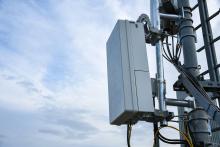Post a comment or question on this story.
How do you keep data residing locally on a handheld synchronized with the central data store? Use a synchronization package. These tools come with handhelds or you can buy third-party applications such as Pumatech's Intellisync, Extended Systems' Mobile PIM Solutions or Synchrologic's Mobile Suite.
Synchronization can be done one-to-one, one-to-many, many-to-many, or a hybrid of these. The one-to-one setup is the simplest and the most common method--the handheld is connected directly to your PC. All changes made on the handheld are sent to the PC (which is acting as a server), and vice versa.
It gets more complicated when you have to synchronize CRM (customer relationship management) or ERP (enterprise resource planning) application data, for instance, with more than one remote user. In this one-to-many scenario, data on a central server is propagated to multiple handheld devices. These devices then exchange data with the central server. The trade-off: The central server can become a bottleneck and a single point of failure, so you need to build in redundancy and failover features just in case.
Many-to-many synchronization is the most complex. It's like a peer-to-peer network: Each remote user has a client and server on the handheld device, and the client gets updates from other clients. This setup requires more processing power on the device and can lead to confusion in large environments, because you can't tell, for example, if all clients have received an update. This method works best when you have a number of remote technicians out in the field without network connectivity. Each technician updates his or her data with that of other members.
Getting content to remote handheld devices is not easy, but there are software packages that can do the job. Desktop management packages from Mobile Automation, Novell and Xcellenet offer both desktop management and content delivery tools. Others, like Appforge (www.appforge.com) and Antenna Software, specialize in mobile applications.
We took Xcellenet's Afaria version 5 for a test drive to see how a desktop management application can deliver content to a handheld device. Afaria has features to publish content and let users push or pull it from central servers, but it lacks synchronization.








